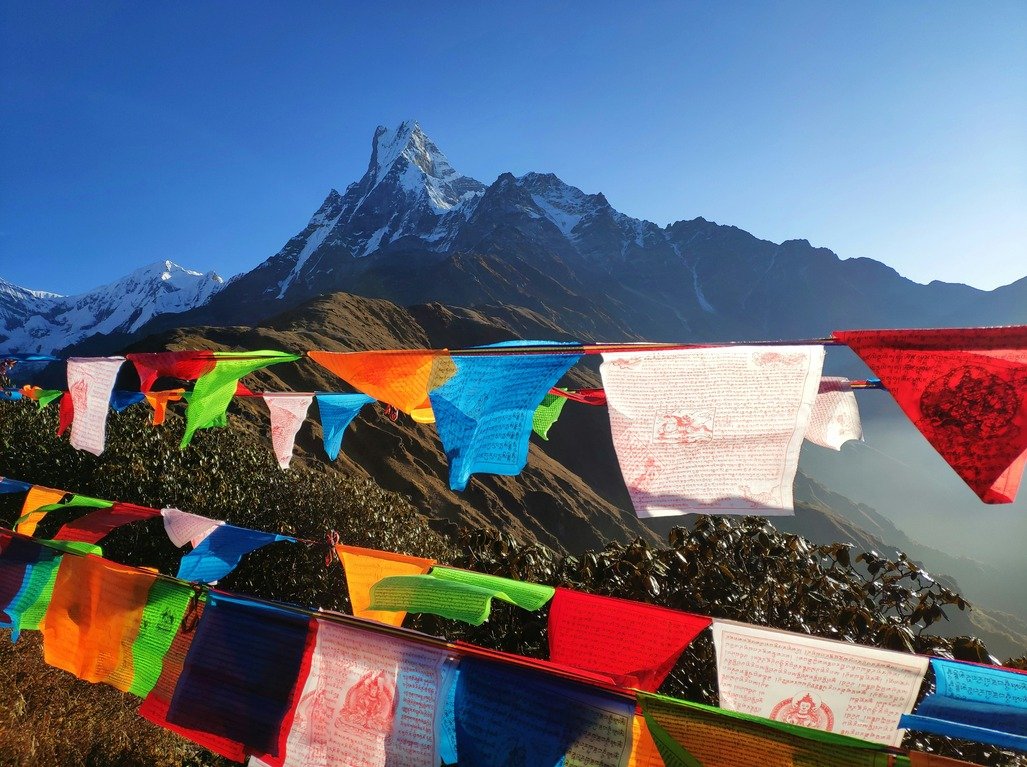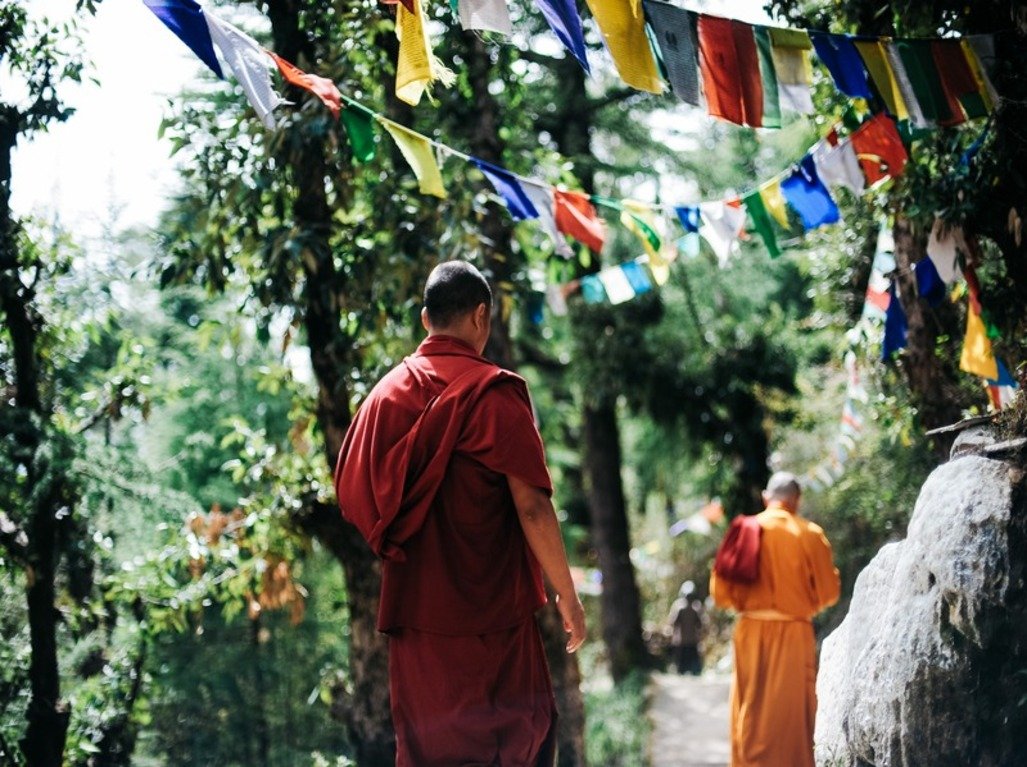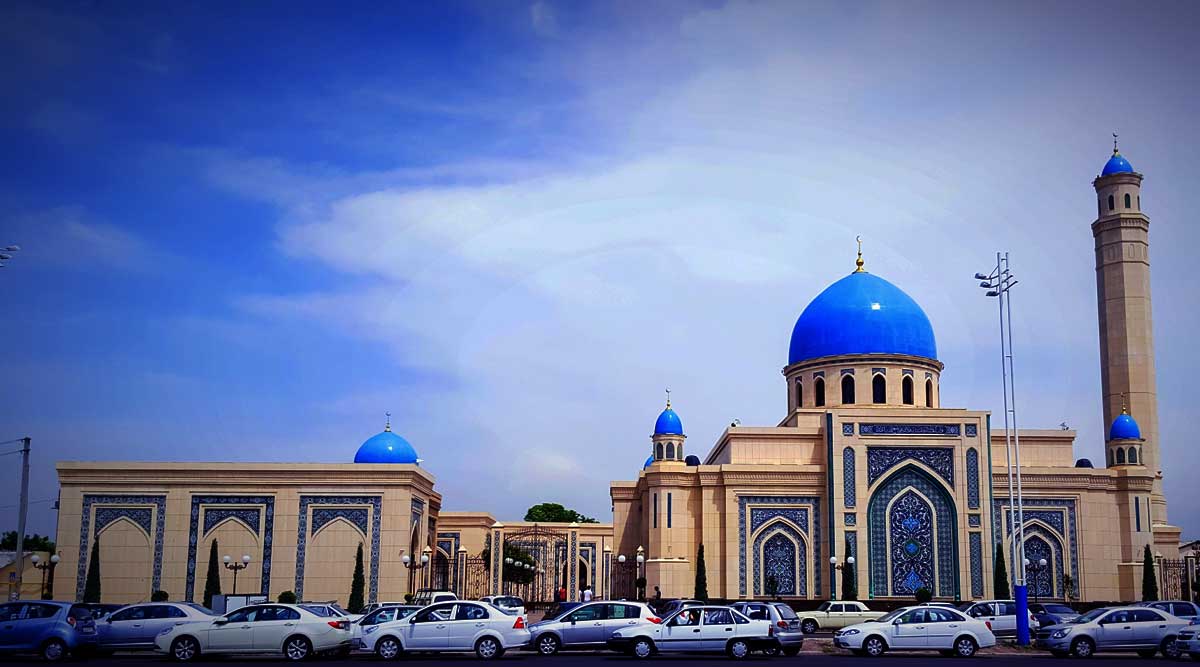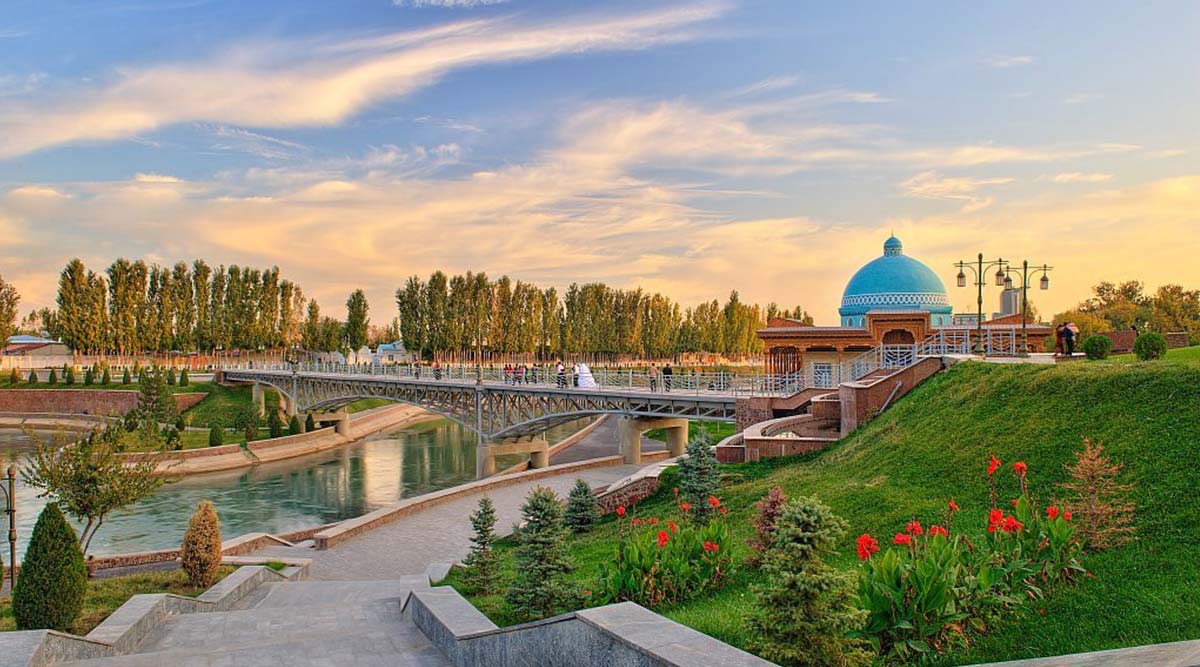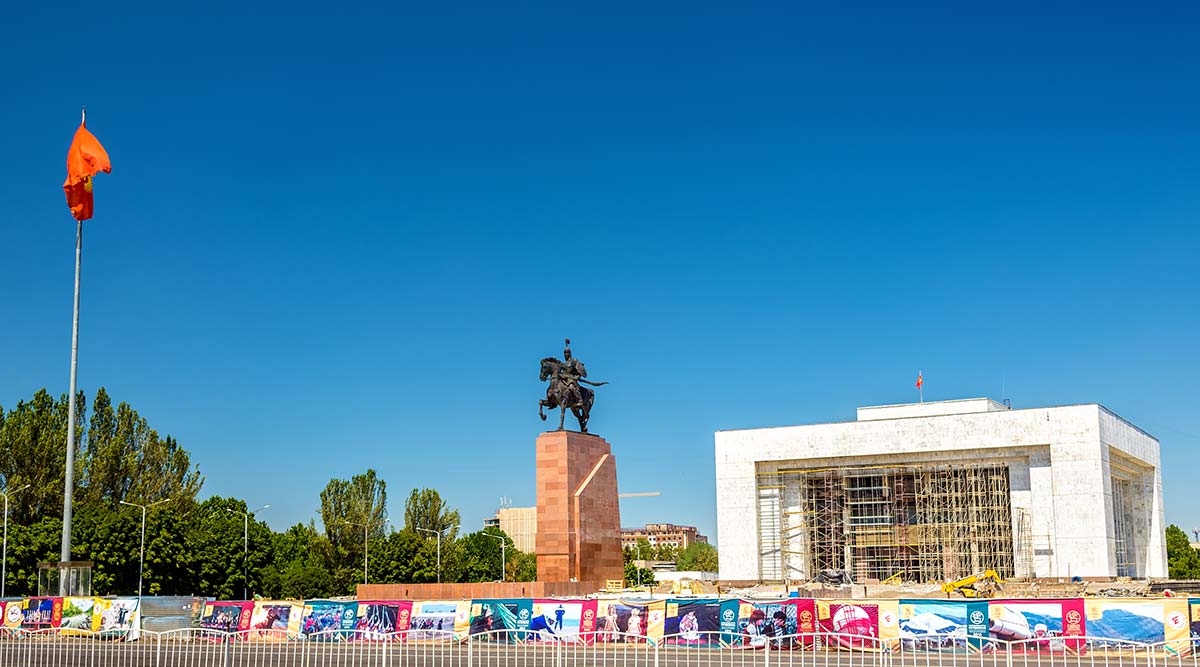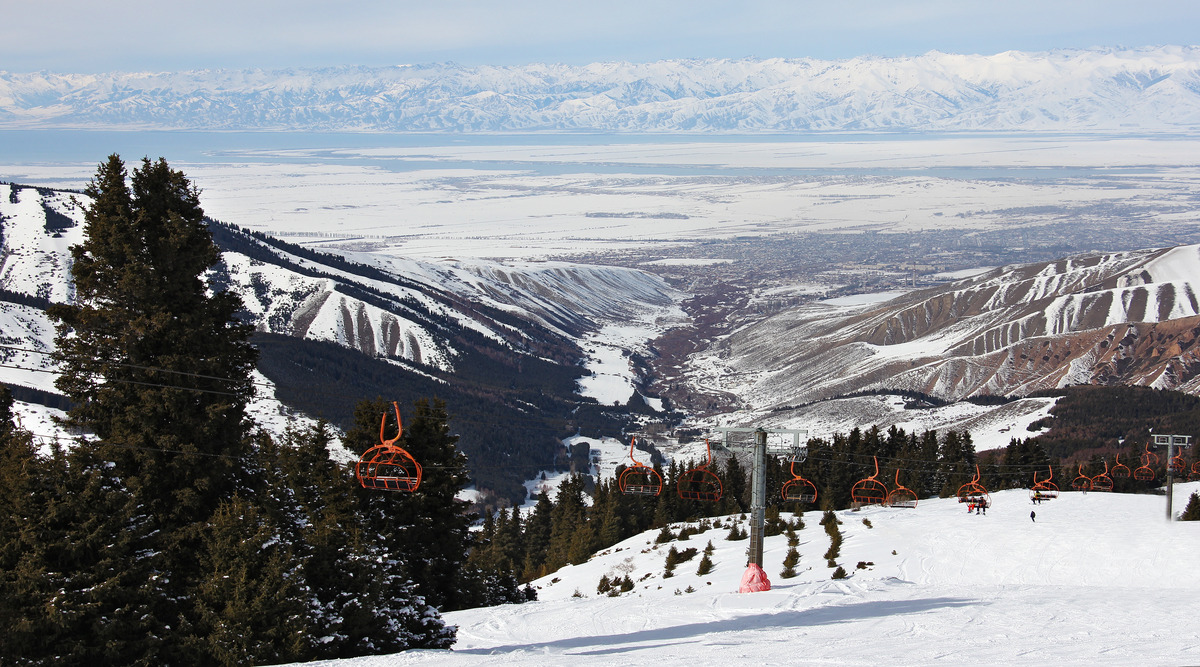Nepal Tour Packages 07 Nights / 08 Days
Destination Details
- Food
- Sight Scene
- Travel Guide
- Transport
Package Overview
Nepal is known for its exquisite natural beauty, with the iconic Himalayas running across the northern and western part of the country. Eight of the ten highest mountains in the world, including Mount Everest, reside within its borders. Although Nepal is a relatively small country in comparison with its neighbors, it has an astonishingly diverse landscape, from the rugged Himalayas in the north to the humid Terai plains in the south.
ARRIVE IN KATHMANDU
KATHMANDU CITY SIGHTSEEING TOUR
KATHMANDU - DRIVE TO POKHARA VIA MANAKAMANA TEMPLE BY CABLE CAR
SARANGKOT EXCURSION & POKHARA CITY SIGHTSEEING TOUR
POKHARA - DRIVE TO CHITWAN
CHITWAN SAFARI ACTIVITIES
CHITWAN- DRIVE TO KATHMANDU
KATHMANDU DEPARTURE TRANSFER
- Traditional welcome drink on Arrival(Non alcoholic)
- Hotel Accommodation on double sharing basis
- 03 Nights’ accommodation at Kathmanduhotel on mention board basis
- 02 Nights’ accommodation at Pokharahotel on mention board basis
- 02 Nights’ accommodation at Chitwan hotel on mention board basis
- Jungle activities(Tharu Dance,Elephant Safari,Canoe trip,Elephant breeding center,Jungle walk)
- Chitwan National Park fee
- English/Hindi speaking tour guide
- 01 liter mineral water per day during trip
- All sightseeing and excursions as mentioned in the itinerary by private Air condition vehicle
- Airfare
- Monuments entrance fees
- Expenses of personal Nature
- Chandragiri cable car cable car ticket
- Travel Insurance Fee
- Meals
Travel Guide

- Nepal
- Kathmandu
- 147,181 km²
- 34°C, Wind
- 4:10 PM
- Nepalese rupee
- Nepali
- 27.8 million
General Information About Nepal
Nepal officially the Federal Democratic Republic of Nepal is a landlocked country located in South Asia. With an area of 147,181 square kilometres Nepal officially the Federal Democratic Republic of Nepal, is a landlocked country in South Asia and the world's youngest republic. It is bordered to the north by the People's Republic of China, and to the south, east, and west by the Republic of India. With an area of 147,181 square kilometers' (56,827 sq mi) and a population of approximately 30 million, Nepal is the world's 93rd largest country by land mass[5] and the 41st most populous country. Kathmandu is the nation's capital and the country's largest metropolitan city.

NepalBefore Nepal's emergence as a nation in the latter half of the 18th century, the designation 'Nepal' was largely applied only to the Kathmandu Valley. Thus up until the unification of the country, Nepal's history is largely the history of the Kathmandu Valley. References to Nepal in famous Hindu epics such as the Mahabharata, Puranas and also Buddhist and Jain scriptures, establish the country's antiquity as an independent political and territorial entity. The Vamshavalis or chronicles, the oldest of which was written during the 14th century, are the only fairly reliable basis for Nepal's ancient history. The Vamshavalis mention the rule of several dynasties the Gopalas, the Abhiras and the Kiratas, over a stretch of centuries. However, no extant historical evidence has yet authenticated the rule of these legendary dynasties. The documented history of Nepal begins with the Changu Narayan temple inscription of King Manadeva I (C 464-505 A.D.) of the Lichavi dynasty.
Lichavi Dynasty
The Lichavis are said to have migrated into Nepal from north India in around 250 A.D. The first Lichavi king of historical importance was Manadeva one Another important Lichavi monarch was Anshuverma who opened trade routes to Tibet. One of his daughters, Bhrikuti, who was married to Tibetan ruler Tsrong-tsong Gompo, was instrumental in spreading the Gospel of the Buddha in Tibet and China. Anshuverma has been referred to as a man of many talents in the accounts of the Chinese traveler Huen Tsang, who had visited India in the 7th century AD. Narendradeval another Lichavi king, initiated friendly relations with China and his successors laid the foundations of friendship with India by entering into matrimonial alliances with the Indian royal families. The Lichchhavi rule spanned over a period of about 630 years, the last ruler being Jayakamadeva.
Malla Dynasty
After the fall of the Lichchhavis came the Malla period during which the foundation of the city of Kantipur (later Kathmandu) was laid. The early Malla rule started with Ari Malla in the 12th century and over the next two centuries grew into a large empire before disintegrating into small principalities which later became known as the Baisi (i.e. the twenty-two principalities). This was more or less coincidental with the emergence of the Chaubisi (i.e. twenty-four principalities). The history of these principalities remains shrouded up until the time when they joined other kingdoms, both large and small, to form the unified Kingdom of Nepal. Jayasthiti Malla, with whom commences the later Malla period in the Kathmandu Valley, reigned towards the end of the 14th century. Though his rule was rather short, his place among the rulers in the Valley is eminent for the various social and economic reforms such as the 'Sanskritization' of the Valley people, new methods of land measurement and allocation etc. Yakshya Malla, the grandson of Jayasthiti Malla, ruled the Kathmandu Valley until almost the end of the 15th century.
After his demise, the Valley was divided into three independent Valley kingdoms, Kathmandu, Bhaktapur and Patan, in about 1484 A.D. This division led the Malla rulers into internecine wars for territorial and commercial gains. Mutually debilitating wars gradually weakened them and by the time of King Prithvi Narayan Shahos invasion of the Valley, they had by themselves reached the brink of political extinction. The last rulers were Jaya Prakash Malla, Tej Narsingh Malla and Ranjit Malla of Kathmandu, Patan and Bhaktapur respectively.
Shah Dynasty, Unification of Nepal
Prithvi Narayan Shah (c 1769-1775), with whom we move into the modern period of Nepal's history, was the ninth generation descendant of Dravya Shah (1559-1570), the founder of the ruling house of Gorkha. Prithvi Narayan Shah succeeded his father King Nara Bhupal Shah to the throne of Gorkha in 1743 AD. King Prithvi Narayan Shah was quite aware of the political situation of the Valley kingdoms as well as of the Barsi and Chaubisi principalities. He foresaw the need for unifying the small principalities as an urgent condition for survival in the future and set him self to the task accordingly. His assessment of the situation among the hill principalities was correct, and the principalities were subjugated fairly easily. King Prithvi Narayan Shah's victory march began with the conquest of Nuwakot, which lies between Kathmandu and Gorkha, in 1744. After Nuwakot, he occupied strategic points in the hills surrounding the Kathmandu Valley. The ValleyÕs communications with the outside world were thus cut off. The occupation of the Kuti Pass in about 1756 stopped the Valleyos trade with Tibet. Finally, King Prithvi Narayan Shah entered the Valley
After the victory of Kirtipur. King Jaya Prakash Malla of Kathmandu sought help from the British and so the East India Company sent a contingent of soldiers under Captain Kinloch in 1767. The British force was defeated at Sindhuli by King Prithvi Narayan ShahÕs army. This defeat of the British completely shattered the hopes of King Jaya Prakash Malla. The capture of Kathmandu (September 25. 1768) was dramatic. As the people of Kathmandu were celebrating the festival of Indrajatra, Prithvi Narayan Shah and his men marched into the city. A throne was put on the palace courtyard for the king of Kathmandu. Prithvi Narayan Shah sat on the throne and was hailed by the people as the king of Kathmandu. Jaya Prakash Malla managed to escape with his life and took asylum in Patan. When Patan was captured a few weeks later, both Jaya Prakash Malla and the king of Patan, Tej Narsingh Mallal took refuge in Bhaktapur, which was also captured after some time. Thus the Kathmandu Valley was conquered by King Prithvi Narayan Shah and Kathmandu became the capital of the modern Nepal by 1769. King Prithvi Narayan Shah was successful in bringing together diverse religio-ethnic groups under one national. He was a true nationalist in his outlook and was in favor of adopting a closed-door policy with regard to the British. Not only his social and economic views guided the country's socio-economic course for a long time, his use of the imagery, 'a yam between two bouldersÕ in Nepal's geopolitical context, formed the principal guideline of the country`s foreign policy for future centuries. The War with British - The Nepalese had differences of opinion with the East India Company regarding the ownership of the land strip of the western Terai, particularly Butwal and Seoraj. The outcome of the conflict was a war with the British.
The British launched their attack on the Nepali forces at Nalapani, the western most point of Nepal's frontier at the close of 1814. Though the Nepalese were able to inflict heavy losses to the British army on various fronts, the larger army and the superior weapons of the British proved too strong. The Nepali army evacuated the areas west of the Mahakali river and ultimately the treaty of Sugauli was signed with the British in 1816. Among other things, this treaty took away a large chunk of the Terai from Nepal and the rivers Mahakali and Mechi were fixed as the country's western and eastern boundaries. At this time, King Girvana Yuddha Biktram Shah was on the throne of Nepal, and the power of state was in the hands of Prime Minister Bhimsen Thapa who wielded enormous power during the rule of King Girvana Yuddha Bikram Shah and his son King Rajendra Bikram Shah.
Kathmandu Durbar square
The Kathmandu Durbar square , located on the heart of Kathmandu is the place to look for most of Kathmandu's temples, old palaces and interesting old quarter of the city. Here you will see several temples built from 13th to 17th centuries. The important monuments here include the courtyard of the living goddess Kumari, the Taleju temple, the Shiva Parvati temple, Maiju Deval, and the Bhairaba statue. The old palace there served as Royal palace for Nepalese kings for several centuries. On the western corner of the complex is a temple named Kastamandap, made with a single tree, the name Kathmandu is said to be derived from this very temple. Equally interesting would be the colourful traditional market place with fruit and vegetable sellers and antique and painting shops. Kathmandu Durbar square is in a 15 minutes walking distance from the city centre and the main tourist hub of Thamel.
Swoyambhunath (Monkey temple)
Two km west of the city centre lies the 2000yrs old Buddhist stupa of Swoyambhunath, perched on a hillock. Swoyambhunath commands a sweeping view of the Kathmandu valley. As there are lots of monkeys on the woods in this hill, this temple is often called "monkey temple" by the tourists. It is a very profound spiritual centre for the Buddhists, active for almost two thousand years. Late afternoon, you will see several lamas worshipping and rolling the prayer wheels will be something you will really like to see. Lighting the butter lamps and the sunset from the stupa will be equally charming.
Bouddhanath
Bouddhanath is yet another Buddhist stupa , the biggest one in Nepal or the whole world, is much different than Swoyambhunath in its atmosphere. This 1500 yrs old stupa is said to be built by a Tibetan Lama . This place is very popular with Tibetan Lamas and refugees living in Kathmandu , hence it is often called "little Tibet ". Late afternoon you will see hundreds of Tibetans praying and circumambulating stupa, which is a very rare spectacle. It is a very spiritually charged place.
Pashupatinath
It is situated 5 kms east of Kathmandu on the banks of the sacred Bagmati River. The temple of lord Shiva, Pashupatinath, with a tiered golden roof & silver doors is famous for its superb architecture. Entrance to the temple precinct is forbidden to non-Hindus. The best view is from the terrace on the wooded hill across the river. The large gilded triple-roofed temple was built in 1696 AD though 300 years earlier there was a structure on this site. The Bagmati River is lined with dharmasalas and cremation ghats .There is usually a cremation in progress on one of the platforms by the river, regarded as holy as it flows into the sacred Ganges. There are many occasions when the faithful take ritual baths in the river. One of the most colorful is the women's festival of Teej when dressed in their finest red and gold saris hundreds of women, laughing and singing converge on Pashupatinath. Another great time to be here is the Festival of Shivaratri, the birthday of lord Shiva.
Bhaktapur
Bhaktapur , 14 km east of Kathmandu is a completely medieval world and a must in your itinerary. With its well preserved temples and monuments , the peasants and artisans, the town will take you in its spell. The whole town has almost no concrete buildings, life here is traditional and peaceful .This well preserved city is the home of medieval art & architecture and still retains its rich medieval aroma. A city of farmers, Bhaktapur is also known for it's pottery and weaving. Bhaktapur is the most charming and the best preserved of the valleys' three cities. The intricately carved temples, alleyways and timeless atmosphere of this place is simply intriguing. The major sightseeing places in Bhaktapur are The Durbar square , the Golden Gate, Palace of 55 windows, Bell of the barking dogs, 5 storied Nyatapole Temple, Bhairavanath Temple, Dattatrya Temple, Pujari Math etc . Nearby Bhaktapur is the 5th century Changunarayan temple, the oldest monument in the Kathmandu valley . Bhaktapur and Changunarayan deserve a whole day for those interested in cultural treasures. Bhaktapur is en route to Nagarkot from Kathmandu.
Changunarayan temple
18 kms east of Kathmandu and a 45 minutes walk up from Bhaktapur lies the beautiful temple of Changunarayan , at the end of a ridge.Changunarayan is the oldest temple in Kathmandu valley dating back 467 AD. The lavishly decorated two-tiered temple was rebuilt after a fire in 1702, testifies to the considerable talents of the Licchavi King Mandeva I, Nepals first great historical figure. The temple stands in a spacious courtyard, with priceless stone sculptures,and writings on copper plates and stone slabs from the 4th to 9th century A.D. (Licchavi period). Changunaryan is a world heritage site declared by UNESCO. There is a pleasant day hike from Nagarkot to Changunarayan.
Nagarkot
The tiny settlement of Nagarkot clings to a hilltop 36 kms east of Kathmandu at an altitude of 2100m. It is one of the best vantage point to view the peaks - from the Annapurnas to Everest, the peaks seem no more than a day's walk away.The sunset and sunrise view over the Himalayan panorama from Nagarkot is a memory of lifetime for many. It is also possible to do a day hike from Nagarkot to Dhulikhel along the valley rim. Equally enjoyable would be a day hike from Sankhu ( Kathmandu to Nagarkot )
Pokhara
Pokhara Nepal - The relaxing town with lakes and mountains and the starting point for several treks to the Annapurnas. Pokhara valley lies in a scenic six hour drive or a 25 minute flight west of Kathmandu. It is famous for its lakes and its location beneath the towering Annapurna massif. It is highly recommendable to visit this scenic valley, stay in small resort hotels with views of the magnificent Himalayan peaks, go boating on the calm waters of the Phewa and the Begnas lakes or go on tours or day hikes in the nearby hills or if time permits, on a well organized trekking holiday to the base camp of the annapurnas / or at least some short treks to the Annapurna foothills. Pokhara developed from a small village to a flourishing tourist town after the growth of tourism in the sixties. So there are not any cultural or historical sites to explore in Pokhara . The tour here involves visiting the Davis fall ( waterfall where the water goes underground), a cave nearby and boating in the Phewa lake.

People Of Nepal
People in Nepal commonly welcome you Namaste as a traditional salute. About 23 million Nepalese are made of 69 different cultural and linguistic group also known as ethnic groups living in different, regions of the country. Mostly each ethnic group has their own unique costumes, speak their own languages or dialects, and follow their own religious practices. In the mid hill mostly settled Rai, Limbu, Tamang, Magar, Sunwar, Gurung and Chepang groups as well as other mongoloid groups live in this areas. The Brahmans, Chhetris, Newar and Thakuris and different occupational groups Kami, Damai Sarki, Gaine are spread generally over most parts of the country. In towns Newar, Marbadi, Punjabi, Brahaman, Kshetri and other mixed groups are also settled. The groups of Rai, Limbu, Gurung, Magar are popular as Gurkha solder in the world. In Terai Plain Brahaman, Kshetri, Rajput, Tharu, Danuwar, Majhi, Darai, Rajbansi, Satar, Dhimal, and Jhangar, Singh, Jha, Yadav and Lal(Mithila) people inhabit in the dun, valleys and different occupational groups are living and being bound together by the ideas of peace and harmony. Terai’s Mithila groups are popular for their authentic traditional arts and paintings. But however mostly either living in hilly region or Terai region their major occupation is traditional agriculture broadly adopted.
Social Structure
As Nepal being a very broad diversified home land of several ethnical groups it has common social family structure. In general living in joint family system at a home, respecting and following own socio-traditional conducts generation to generation. Showing physical affection openly in public is restricted; gents and ladies socialize separately both before and after marriage with family gatherings. Normally marriage is arranged by parents with help of marriage consular called Lahmi
Main Occupations
In general mostly Nepalese people are involved in their traditional occupation agriculture. About 76% of total population in Nepal still belongs to traditional agriculture system as their main source of economy and rest of do other jobs as cottage industries, general manufactures, goods trading, government officials, hospitality tourism and others. All together still about 33% of total populations are dependent in agriculture.
Food Habit
In normal way Nepalese people’s food habit can be marked as a rice culture social adoption. Nepalese main course of meal known as Dal-Bhat-Tarkari traditionally which is perfect combination of carbohydrate, protein, vitamin, mineral, and fat
Dress
There are many specific dressing style in Nepal as a country is being home of multi cultural and lingual groups people. Most Nepalese ethnic groups have their own unique style of dress according to region and culture. Among gents Daura Suruwal Dhaka Topi,T- shirt, Shirt Pant, different casual wears and ladies Kurta Salwar, Saries Blouse (Cholo) T- shirt, Shirt Pant, different casual wears are commonly worn by Nepalese people all over the country.
When to go
Climate factors are very important in deciding on a visit to Nepal. October-November, the start of the dry season, is in many ways the best time of the year in Nepal. With the monsoon only recently finished the country-side is green and lush and Nepal is at its most beautiful. Rice is harvested and there are some more important and colorful festivals to enjoy. At this time of the year the air is sparkling clean, visibility is unexcelled and the Himalayan views are as near perfect as you can ask. Further more the weather is still balmy, neither too hot nor too cold. For obvious reasons, this is also the peak tourist season. In December-January the temperatrues and visibility are still good, though it can get very cold. Trekkers need to be well prepared, as snow can be encountered on high-altitude treks. Heading for the Everest Base Camp at this time of the year can be a real feat of endurance and the Annapurna Circuit trek is often closed by snow on the Thorang La pass. Down in Kathmandu the cheaper hotels, where heating is non-existent, are often chilly and gloomy in the evenings. There's sometimes a brief winter monsoon, lasting just a day or two in January. February-March-April, the tail end of the dry season, is good second-best time. The weather gets warmer so high-altitude treks are no longer as arduous, although by the end of the dry season, before the monsoon breaks, it starts to get too hot for comfort.
Visibility is not good as earlier in the dry season since the country is now very dry, and dust in the air reduces that crystal Himalayan clarity. In compensation, Nepal's wonderful rhododendrons and many other flowers are in bloom so there's plenty of color to be seen along the trekking trails. May and the early part of June are not the best months as it is extremely hot and dusty and the coming monsoon hangs over you like a threat. Mid-June to September, when the monsoon finally arrives, is the least popular time to visit Nepal. The rains wash the dust out the air, but the clouds obscure the mountains so you're unlikely to enjoy more than a rare glimpse of Himalaya. Although it doesn't rain all day it usually does rain everyday and the trails will be muddy and plagued by leeches. Despite this, it is possible to trek during the monsoon, although high rivers may further complicate matters and it's certainly not as pleasant as other times of the year. Landslides sometimes block roads during the monsoon but many visitors still come to Nepal form India as the weather is even less pleasant down on the plains. The latter part of the monsoon, the months of August-September, are a time of festivals which will certainly enliven a visit to Kathmandu.

Currency Of Nepal
Nepali Rupee notes come in Rs. 1, Rs. 2, Rs. 5, Rs. 10, Rs. 20, Rs. 50, Rs. 100, Rs. 500 and Rs. 1000 denominations. Coins come in 5p, 1 0p, 25p, Rs. 1 & Rs. 5 denominations. Foreign currencies must be exchanged only through the banks or authorized foreign exchange dealers. The receipts from such transactions are to be obtained and retained. Visitors can exchange foreign currency at the foreign exchange counter at the airport upon arrival. Visitor other than the Indian nationals have to make the payment in hotels, travel or trekking agencies and air tickets in foreign currency. Non-lndian visitors are not allowed to import or export Indian Currency.

Nightlife Of Nepal
If you want to feel the night life in NEPAL, you can enjoy in Kathmandu or Pokhara specially. Both places are famous for night entertainment. Most of the People come to NEPAL by air and book their hotels at Thamel, Kathmandu. Thamel is really famous for tourist and night life. At Thamel you can find many pubs, bars, money exchange, Handicraft shop, Fast food, coffee cafe, Internet café, Taxi, Travel agency, rafting rovider, bungy provider and more related with tour and travel. You can find advertising board at each house saying about bar or travel agency or Service provider. You might find this place crowded as the crowed is almost 70 percent of foreigner. You can see the menu outside the restaurant door. You can find the restaurant which serves you Indian, Italian, Chinese, Japanese, German etc items. I mean to say you can get Asian, European, Intercontinental, almost every kind of food and beverages. At Kathmandu you can also visit to Patan area or Jhamel which is a new area with different kind of restaurant and bars. Both Patan and Ghamel is 5-6 Km from Thamel area. At Thamel you can also listen to live music, enjoy the disco parties, spend you good time at tequila bar and beer bar. If you are a beer lover then please be aware of its price. In Nepal right now most of the restaurant and bar charges Rs 300-400 for each.
It would be great if you choose to visit Nepal at Christmas time or new year time, because at this time, the environment of Kathamandu, pokhara is awesome. Pokhara city is much more cleaner than Kathmandu and the price of beer is also little bit low in compare to Kathmandu, good thing is that you can bargain the price of beer and other alcohol in Pokhara.You can see the nature of each restaurant and bar in Pokhara are quite bigger and cleaner in compare to Thamel Area. Pokhara is 190 km away from Kathmandu, you need maximum of 5 hours day to reach Pokhara by bus or you can take flight from Tribhuwan International Airport in order to reach there in half an hour. You can also find good tourist bus services from Kathmandu to Pokhara. In Pokhara during Christmas to New year you can feel like night festival in the air along with awesome crowd, tranqulity and the scene of lake and mountains, the true beauty of Nepal. Lake Side area is famous for all the above mention entertainment in Pokhara. Hope from this information will entice you to taste the night life of NEPAL with typical Nepali culture.
Language In Nepal
Nepal is an incredibly diverse country with respect to culture and language. There are 125 different documented languages spoken in Nepal. The primary language of Nepal is Nepali which has been the push of the King and government for about 50 years now. Up to about 50 years ago, each isolated area basically spoke their own language and had there own customs. Since the launch of a national educational program in Nepal in the 1950's, the majority (58.3%) of Nepali's speak Nepali, but by no means is it consistent throughout the kingdom. Generally speaking, most Nepalis in the central and eastern development regions speak Nepali fluently. However, there are many areas out west where people still do not speak Nepali. Most of this has to do with the fact that the developement has been more intense in the central and eastern regions. From the 50's up until 95-96 the government has used every means possible to unite the kingdom under one language. There has been much success over the years. However, due to the loss of some of the indigenous languages along with some democratic voicing of some of the larger non-Nepali languages, the government (Radio Nepal) has since recognized about 7 primary languages and currently broadcasts news in all of the primary languages. They are Nepali, Newari, Hindi, Gurung, Limbu & Gorkha etc.

Shangri-La Hotel & Resort
Nepal
Kathmandu, Nepal
The Shangri-La Kathmandu Hotel is situated in the serene diplomatic enclave, just 7 kms away from the airport. It is easily accessible to the Royal Palace in Dubar Square and the city centre. Guest rooms are well appointed with simple elegance and filled with the touches of ethnicity. The hotel’s magnificent garden that surrounds the pool is ideal for rest and relaxation.The 7 Delux suits, 22 Executive club rooms, 22 Delux rooms & 44 Superior rooms furnished in contemporary elegance, are air-conditioned & heated with individually controlled thermostats, complemented by an excellent variety of dining, sports and recreation facilities thus making Shangri~La the perfect blend of contemporary international standards and graceful Nepalese tradition.

The Grand Hotel
Nepal
Nuwara Eliya, Sri Lanka
The Grand is a 4-star hotel in Nepal strategically located in the heart of the city's dynamic business, cultural and entertainment hubs. Some of the major landmarks of the city that are located within accessible distance from the hotel, include the Swayambhu Nath Temple (known as the Monkey Temple), National Museum, Casino Nepal, United World Trade Centre Mall, Kathmandu Shopping Mall etc.The Grand hotel is a modernly designed building and is accredited as the tallest hotel of the valley providing all modern facilities to our guests. Guests are now able to check in and out comfortably at one of the four sit-down satellite counters. The Grand has 91 well-appointed guest rooms, including 7 Suites. Guest rooms are clean, comfortable & Elegent furnished with modern decor. Wireless internet access is available in all rooms, the business centre and lobby area.










